Good food packaging design can let consumers interact better with the product, give them a sense of responsibility, as well as reinforce a positive behavioral change towards living a more sustainable life.
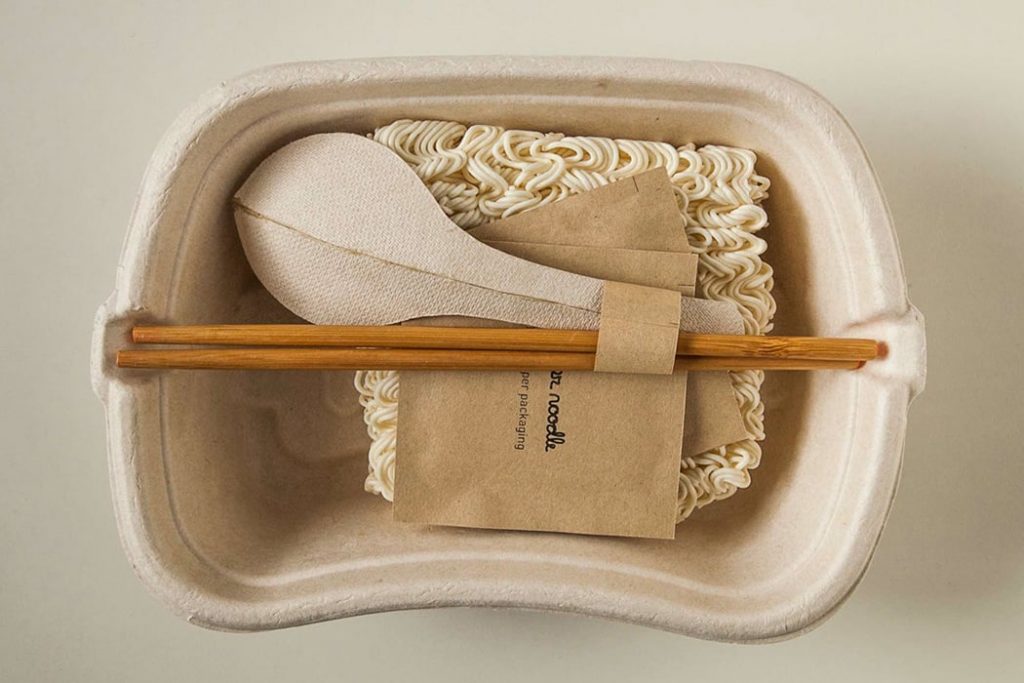
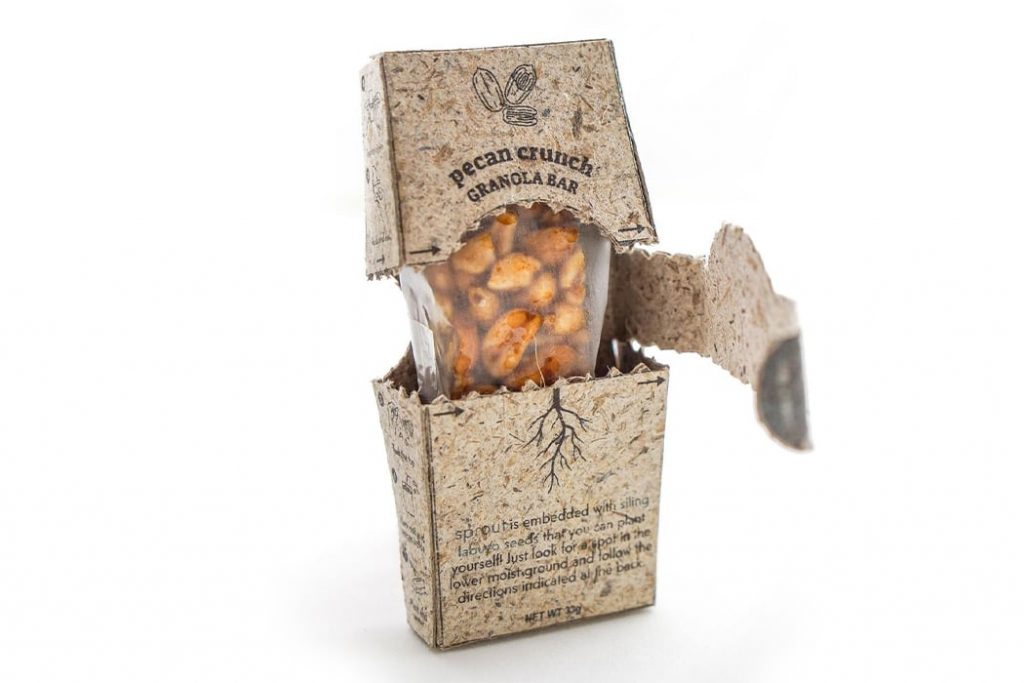
Sprout by Pat Mangulabnan
Conventional food packaging that is made from single-use plastic is one of the biggest contributors to ocean pollution. It makes up for more than 50% of the plastic waste problem. Designer Patricia Mangulabnan addresses this issue through Sprout, an innovative environmentally-friendly packaging that is crafted using Pinyapel, the result of an initiative led by the Design Center of the Philippines. It is a specialty paper made of discarded pineapple leaves, common agricultural waste accumulating in her native Philippines.
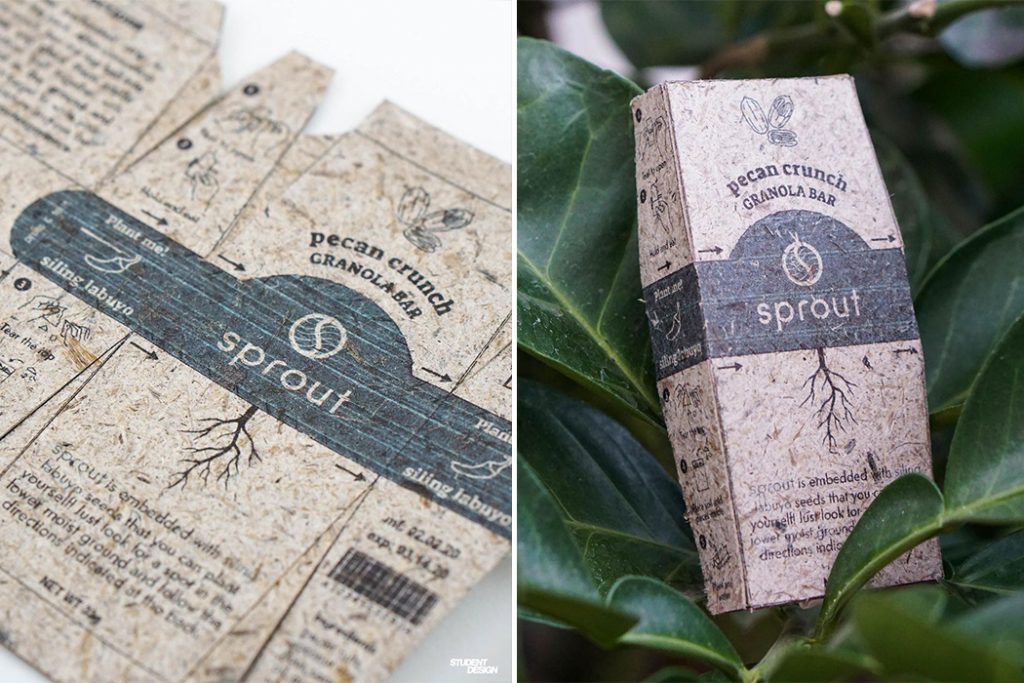
Sprout by Pat Mangulabnan
The initiative helps eliminate unnecessary waste in the country, since the Philippines is one of the largest producers of pineapple fruit in the world. It also encourages locals to actively contribute to the preservation of the diverse Philippine flora.
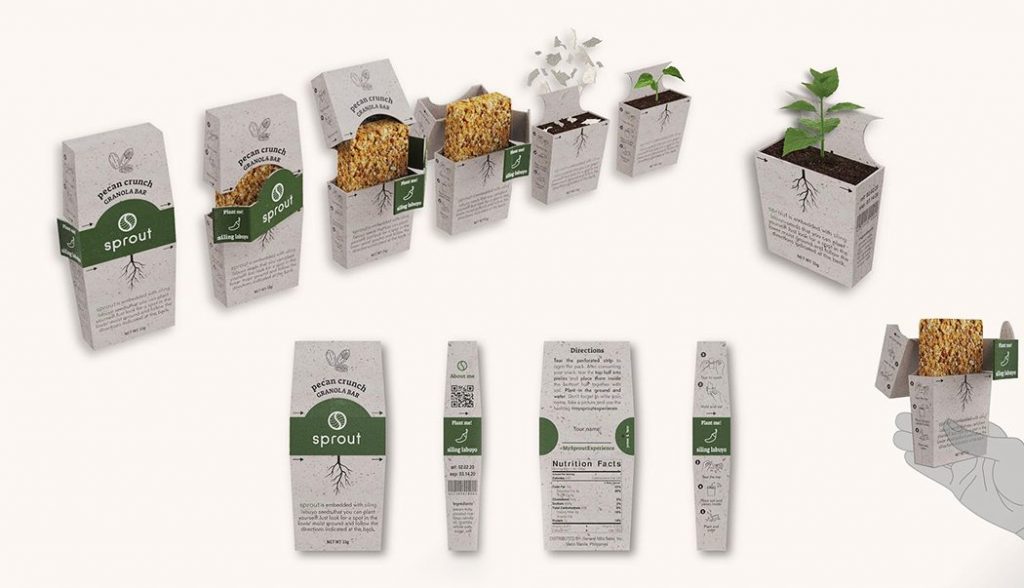
Sprout by Pat Mangulabnan
Not only the packaging is sustainable, it also aims to contribute to the growth of local plants. Instead of discarding the packaging, the user is encouraged to plant learn more about the seeds embedded into the material and plant them.
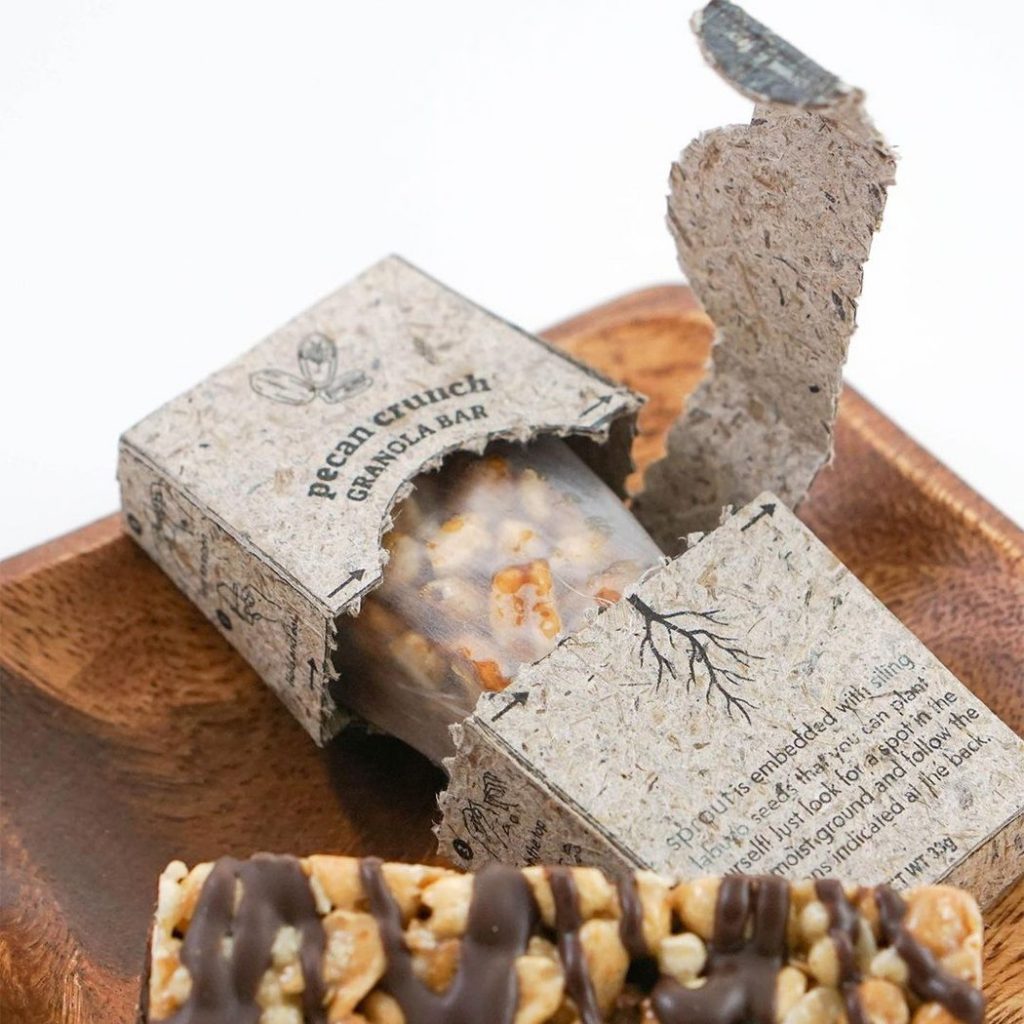
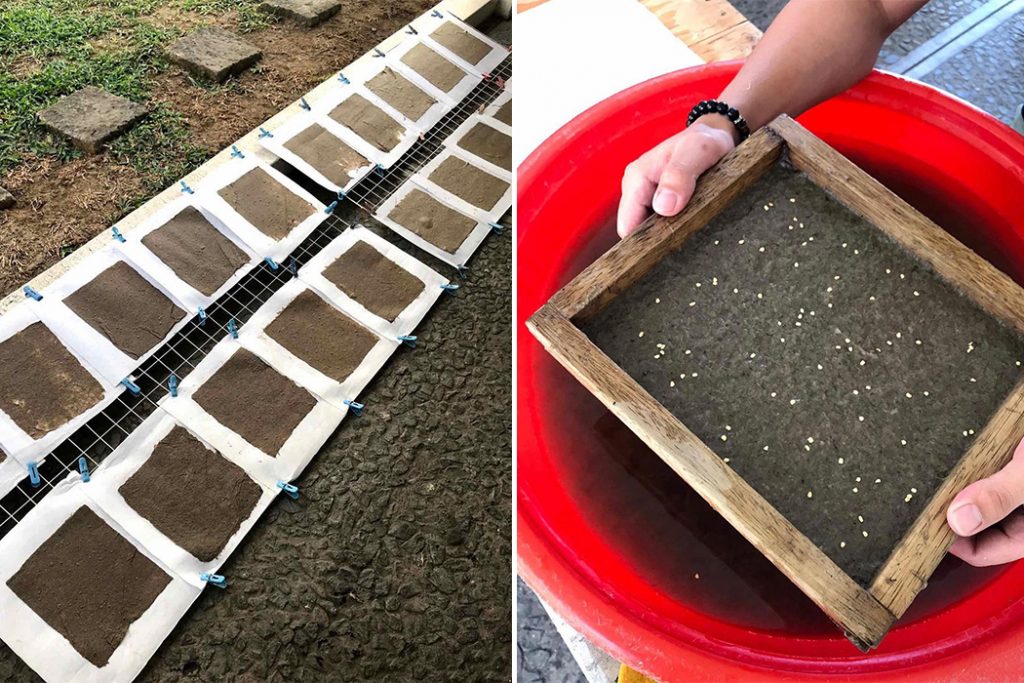
Sprout by Pat Mangulabnan
Each seed was selected after intense research to pick those that are non-invasive. The designer ensures proper composting and planting is possible by using organic soy ink for the printing as well as an edible starch wrapper to further protect the food item inside the package.
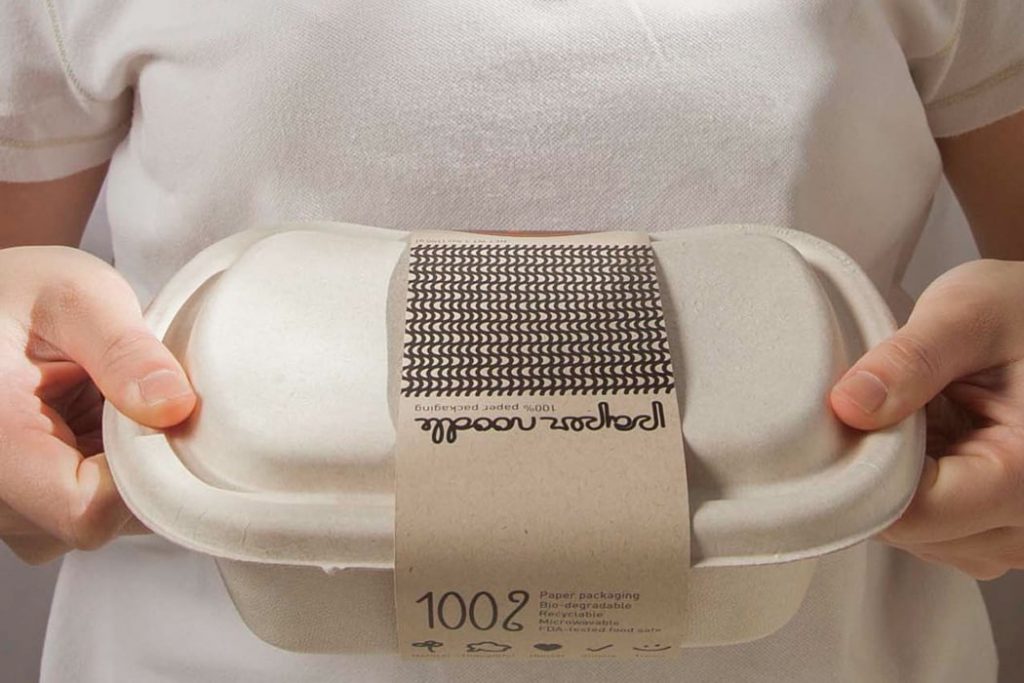
Paper Noodle by Emily Enrica (also header image)
A study shows that in 2018 alone 103 billion packets of instant noodles were sold worldwide. Low-quality plastic and polystyrene used for its packaging is not only harmful for the environment but can leave minuscule toxic residue in the noodles too.
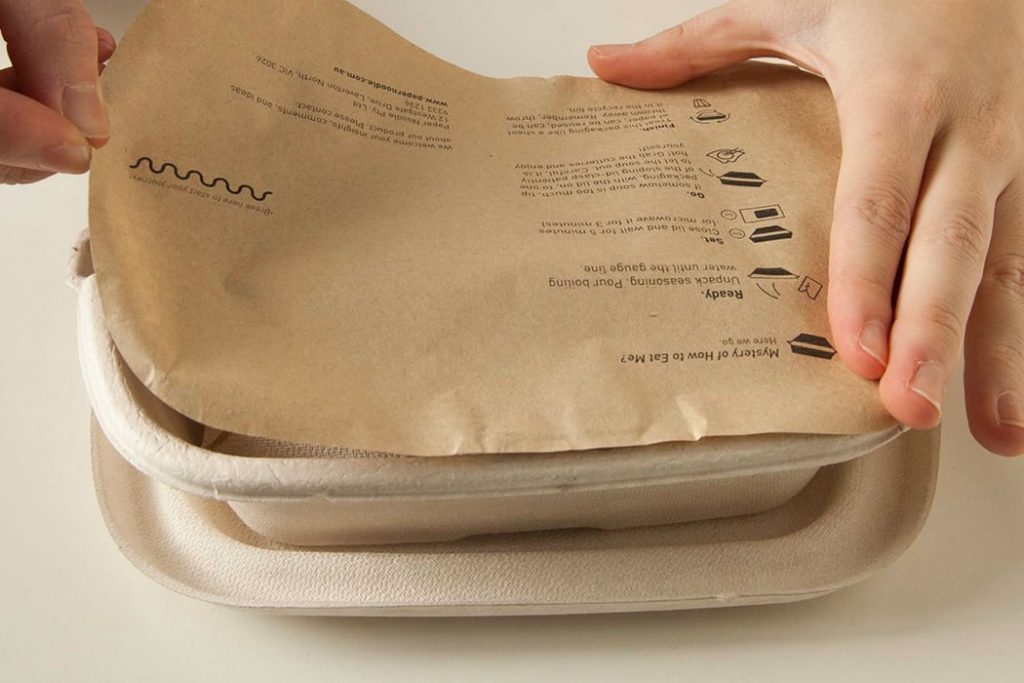
Paper Noodle by Emily Enrica
Australian student Emily Enrica proposes 100% paper pulp noodle packaging, which is 100% biodegradable, recyclable, microwave safe and FDA tested food safe.
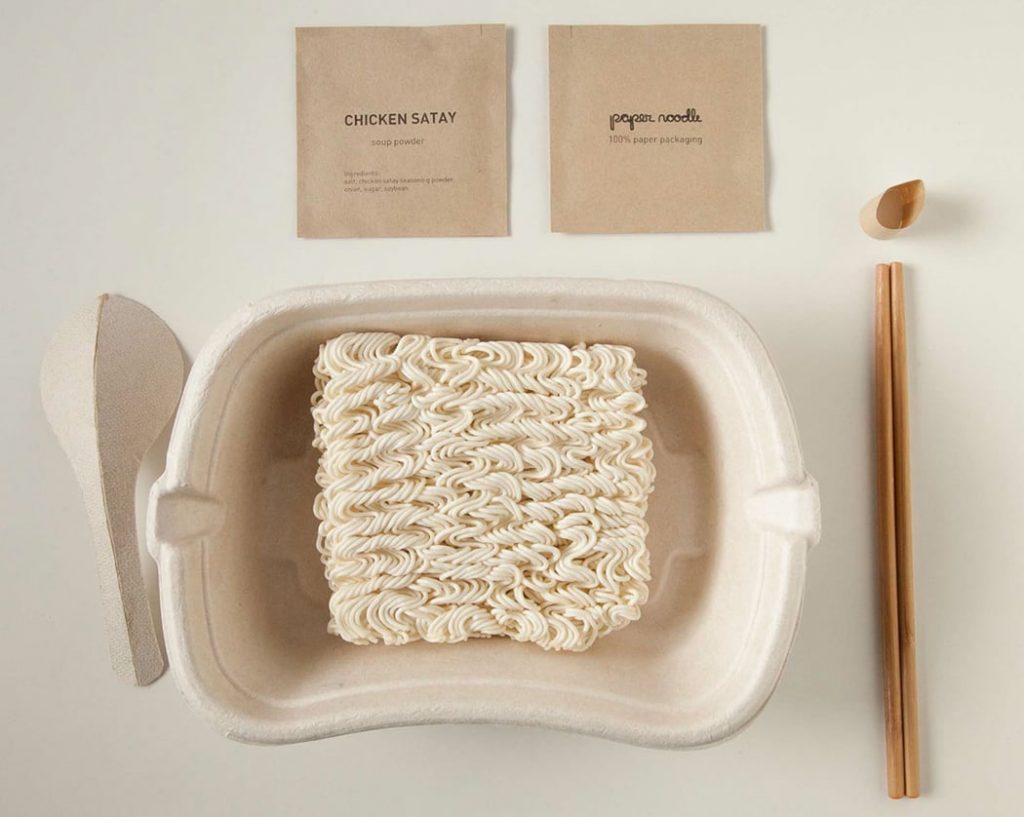
Paper Noodle by Emily Enrica
Aptly named Paper Noodle, the design of the box is ergonomic, which makes it comfortable to hold even when the contents inside are hot. Other details of the set, such as the spoon and the belly band of the box keeping the noodles sealed, are made of debossed paper pulp too, further reducing waste.
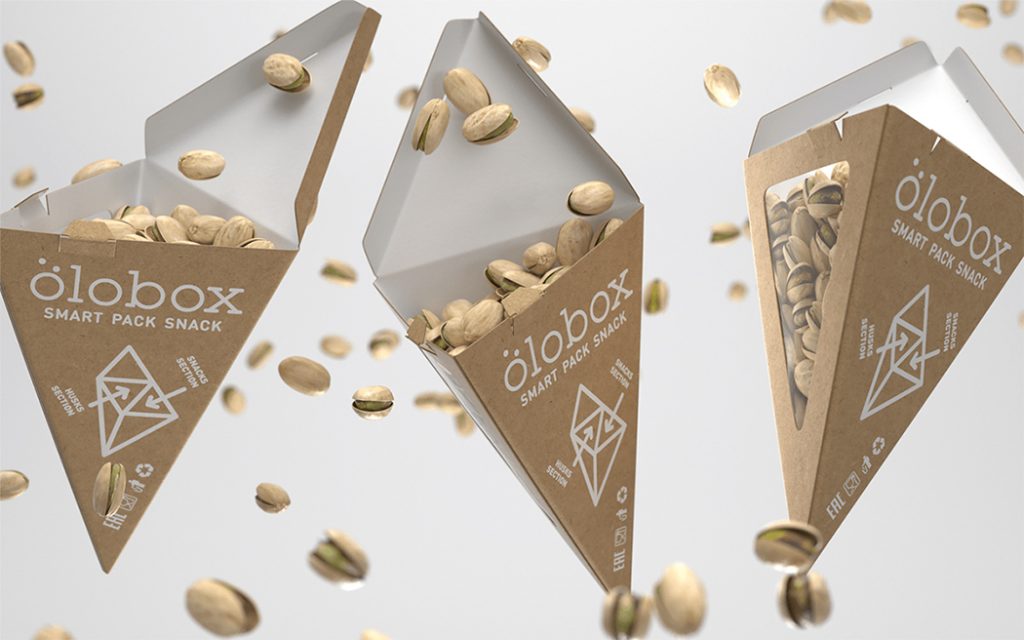
ÖLOBOX by Olkas Voron, Nikita Bulgakov and Aleksey Koler
Designer trio of Olkas Voron, Nikita Bulgakov and Aleksey Koler has come up with an ingenious packaging that would come in handy for those who favours eating pistachios. the concept aims to encourage a new culture of healthy snacking and an attentive attitude that takes into account how we interact with the packaging,
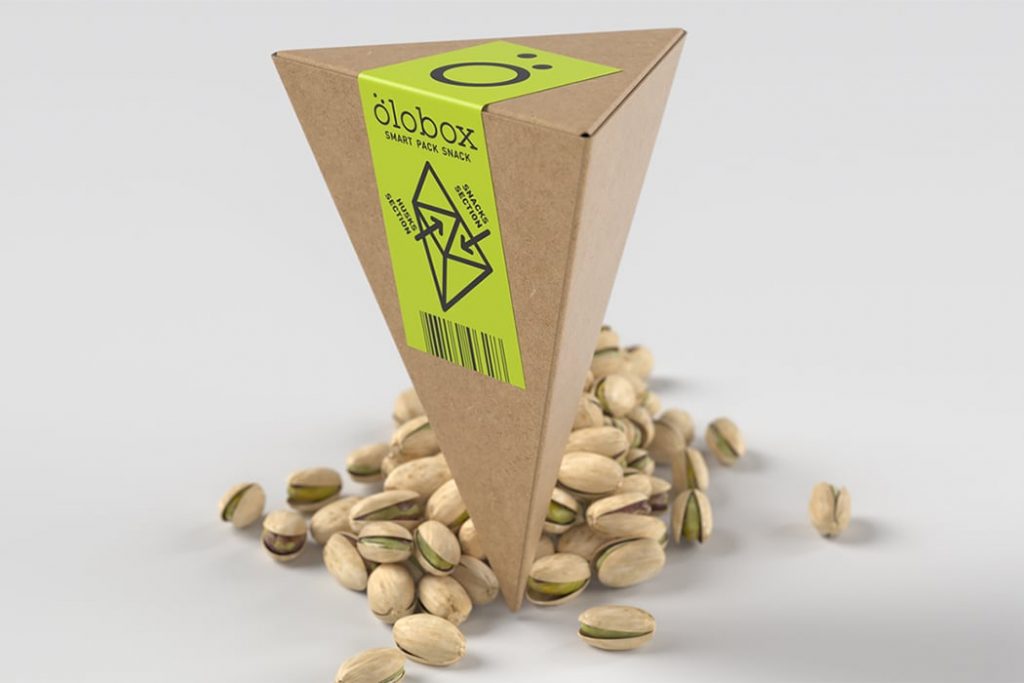
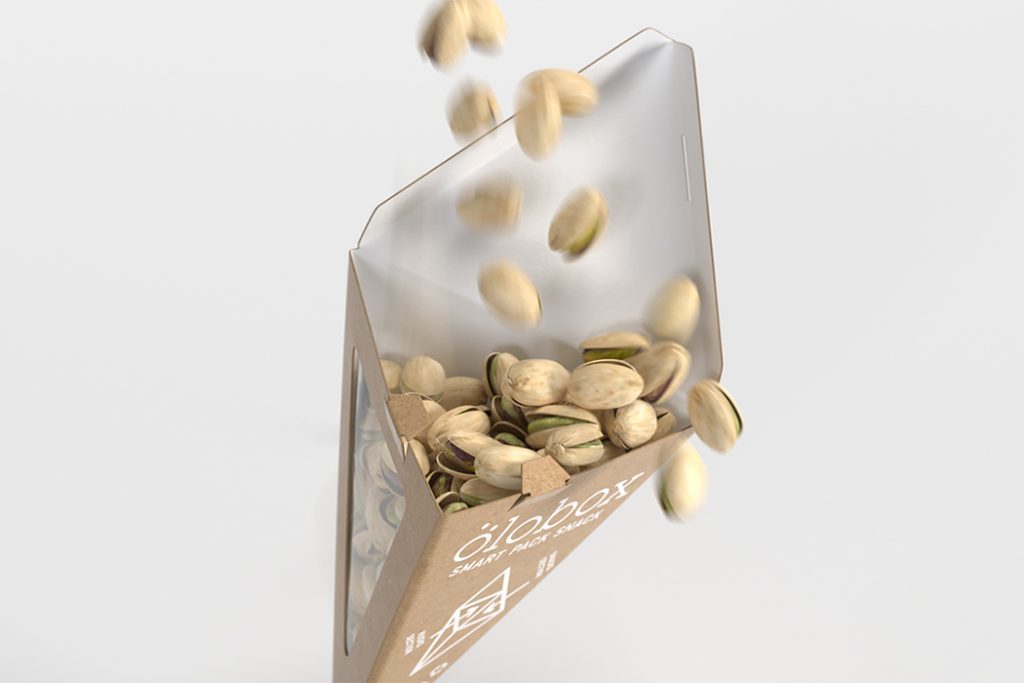
ÖLOBOX by Olkas Voron, Nikita Bulgakov and Aleksey Koler
Named Ölobox and intended for snacks that need shelling, the origami-inspired packaging is designed with a pocket for husks inside, which opens after the pack is opened. When the user finishes eating, the pack with shells can be closed and discarded.
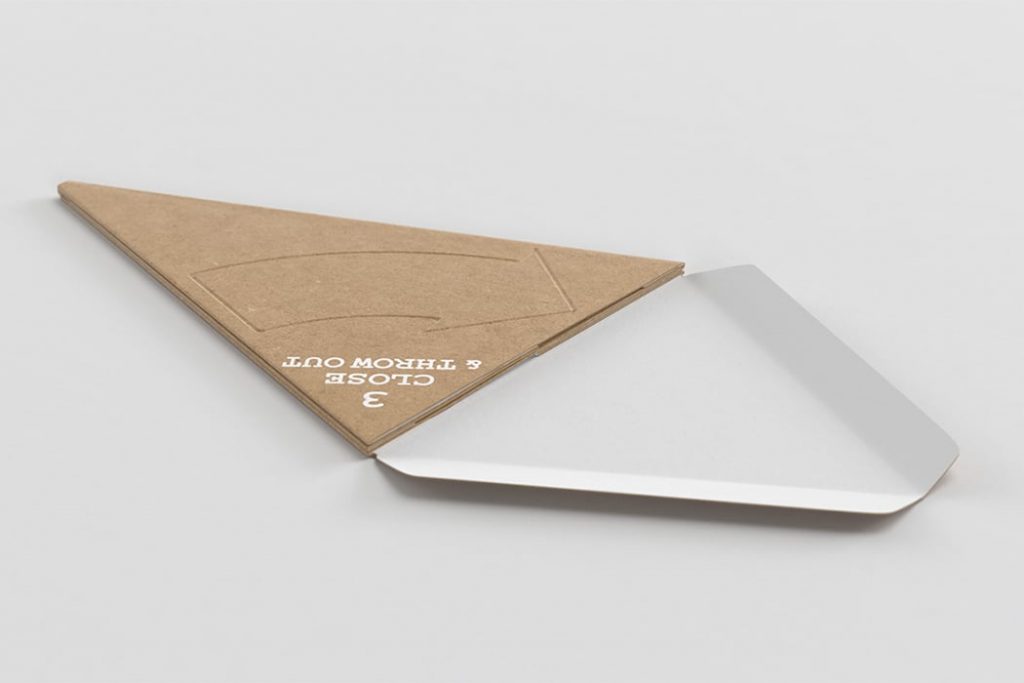
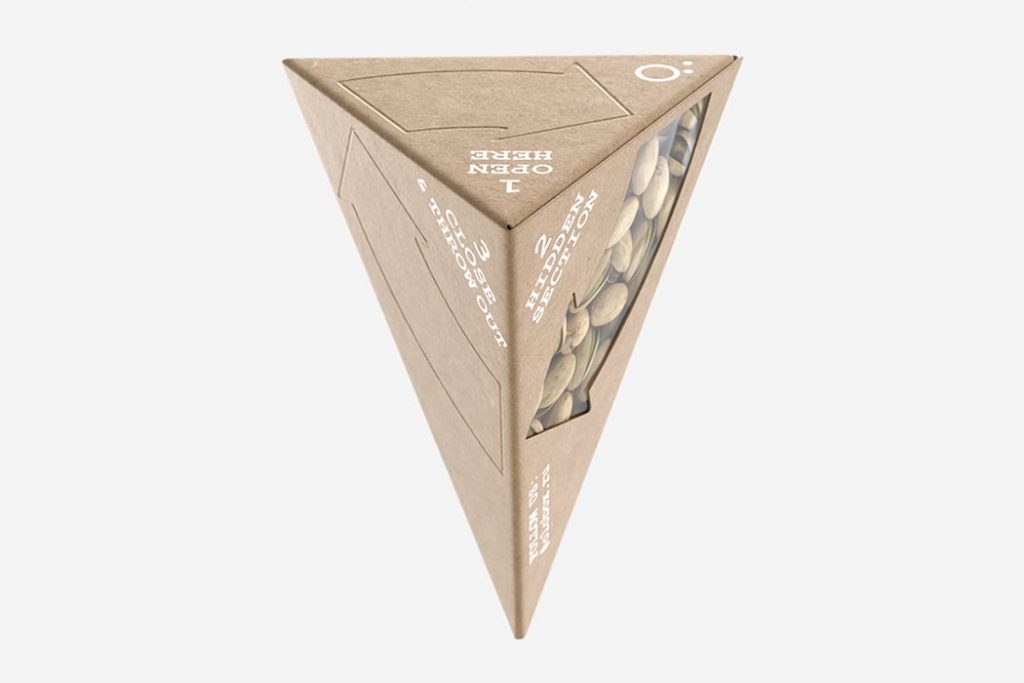
ÖLOBOX by Olkas Voron, Nikita Bulgakov and Aleksey Koler
The team explains that they have found inspiration in the symbol of recycling. The main idea of the design is based on the instruction there with the arrows being the key elements. They show the sequence of actions for the consumer: 1-2-3, intended to make the experience easy.